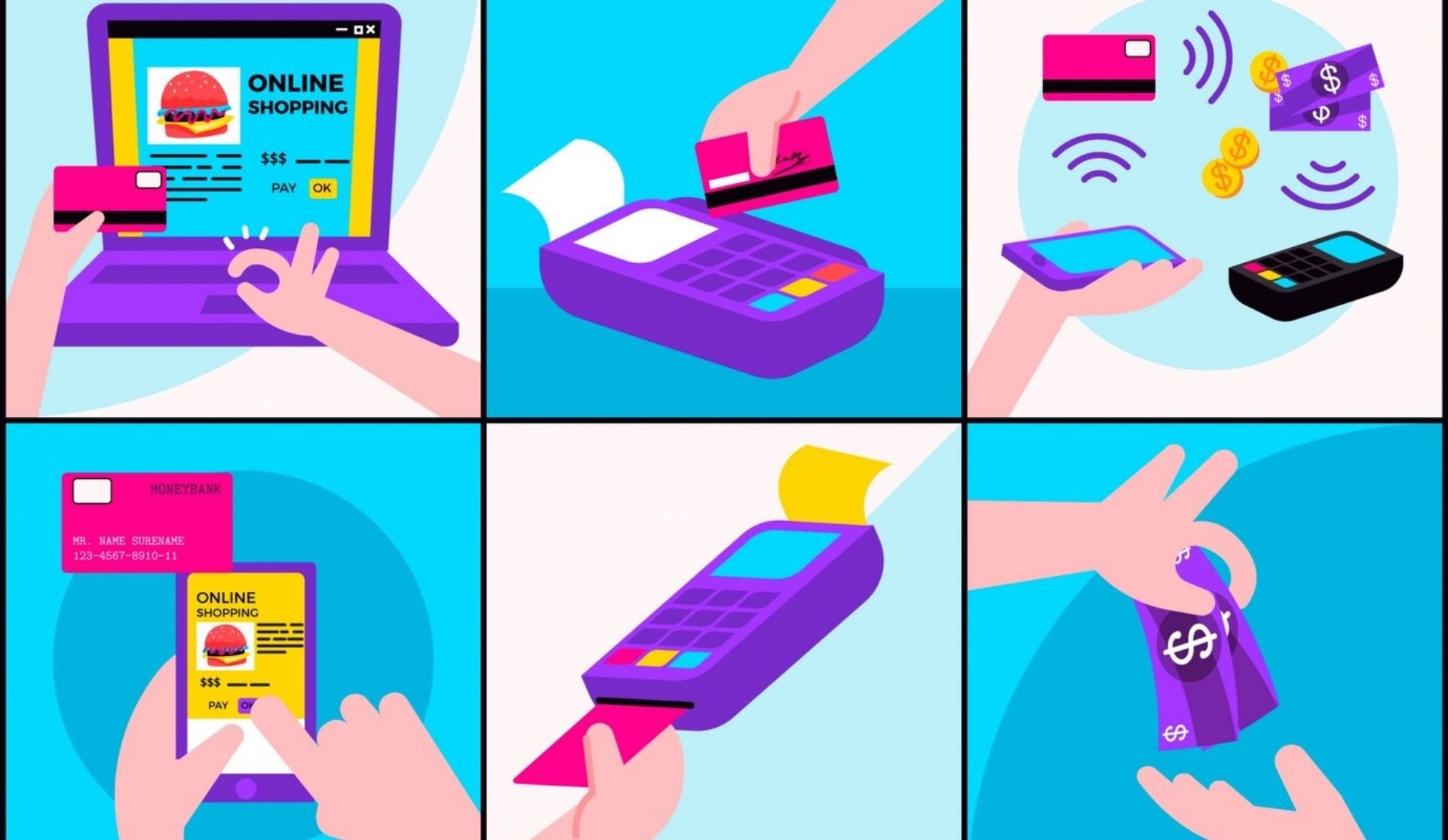Businesses in the US collectively paid upwards of 160 billion in payment processing fees in 2022, 16.7% more than the previous year. The increased digital payment usage and other payment methods have necessitated that all businesses be flexible and provide the preferred payment method.
Businesses must know the fees for each and every transaction in order to maintain substantial profits. Various different charges, such as setup and transaction fees, make credit card processing one of the more expensive options for small businesses. Many companies also tack on additional fees for security measures, creating accounts, and other services. Average fees range from 1.7% for swiped cards to 3.5% for cards entered by hand. For business owners, these fees are harsh.
Understanding The Credit Card Processing

Credit card processing is the process by which money is authorized, cleared, and settled between buyers and sellers. The companies charge merchants fees, known as processing fees or swipe fees, for providing this service. These fees are divided among merchants, credit card networks, banks, and processors. Fees can vary by the service provider, merchant agreement, type of credit card used, and nature of the transaction , for example, online or in person. Those are fees that merchants pay to process credit card payments.
Understanding Payment Processing Fee

Payment processing is the secure movement of funds from a customer to a merchant, which is typically done digitally via credit card, debit card, or digital wallets. It involves getting authorization, transferring the money, and completing the transaction between all parties involved, including customers, businesses, banks, and payment networks. Payment gateways and processors facilitate these transactions to ensure that they go through seamlessly and securely.
Types Of Payment Processing Fees

Interchange Fees
Interchange fees are payments from merchants to credit card providers, which are also known as discount rates. These fees vary according to the transaction amount and industry; online transactions tend to have above-average fees because of fraud risks. They comprise a percentage of the transaction plus a fixed fee, dictated by credit card issuers and adjusted typically twice a year.
Assessment Fees
Among other things, these fees help pay the credit card networks like Mastercard and Visa or the costs they incur. These fees are typically a small percentage of every transaction.
Markup Fees
Markup fees, also known as merchant service fees, which are charged by the payment processor who handles credit card transactions. These costs can be monthly fees, per-transaction fees, equipment lease fees, and statement fees.
Transaction Fees
Fees incurred for each transaction processed, which can either be a percentage/variable amount or a flat fee. They fluctuate with respect to the card type and the type of business.
Payment Gateway Processing Fees
Businesses require a payment gateway to process online transactions, which comes with its own batch, monthly, setup, and transaction fees.
Equipment Fees
Small businesses may rent or purchase payment processing equipment, with set-up fees typically $0 to $2,000, and possible monthly fees.
Chargeback Fees
Customers can dispute those transactions and seek refunds, which may incur a fee from the payment processor for investigating and handling their funds. It charges a fee of about $20 to $100 for this service, depending on the number of disputes.
PCI DSS Fees
The PCI DSS (Payment Card Industry Data Security Standard) ensures that businesses are taking the necessary precautions to protect card data for their customers. PCI SSC is in charge of this rule. Compliance fees range from $300 per year for small businesses up to $70,000 for larger companies.
Termination Fees and Additional Fees
Merchants may incur fees if they terminate their agreement with the payment processor prematurely. These include statements, account setup, and batch charges for additional services.
Payment Processing Fees, How Are They Determined

The transaction processing fees can be highly variable for businesses. Interchange fees, which are set by card networks, go to the bank behind the card and are based on factors such as the card type, transaction method, and business type. This fee typically consists of a percentage of the transaction amount + an additional fixed fee per transaction Fee for card networks, which for operating the card network, tend to be small and can vary slightly between networks.
Payment processor fees, these fees are from processors that help facilitate transactions. These include a set fee per transaction, a percentage of the transaction amount, or a blend of both. Processors may also charge additional fees for services such as account management, customer support, and handling disputes.
Fees can also vary from method to method; credit card fees, for instance, are generally higher than fees for debit cards.
Transactions with premium cards might carry even steeper fees. Over-the-counter transactions are typically cheaper than their online counterparts.
A processor might charge businesses that experience fraud or disputes higher fees and those with a greater volume of transactions or larger sales lower fees. Business owners need to know the fees from different providers and compare processors for the best deal.
Reasons For Business Applying Credit Card Surcharge

Credit card surcharges are fees that businesses charge to offset the associated costs of accepting credit cards. The bank or payment processor charges you these sales fees, which are usually a small percentage of the sale or are a set amount for every sale. The intention of these payments is to assist with cost coverage, particularly for small businesses that generate less revenue.
Other costs associated with accepting credit cards include maintaining up-to-date equipment and software, complying with security regulations, and processing refunds for fraudulent charges. Surcharges are sometimes applied to incentivize customers to pay for their purchases using cheaper methods, such as cash or debit cards.
Structures of Payment Processing Pricing

There are curtained structures to determine payment processing pricing:
Interchange-Plus Pricing
Interchange-plus pricing allows merchants to know precisely the fee they are paying. It adds a percentage mark-up on top of existing interchange fees, charging more when the rates are higher and less when they are lower. This nuance is something merchants should consider when looking at their transactions. So many companies that provide this pricing include Payment Depot, Stripe, and Helcim.
Fixed Fee
Another model is that of a payment processor charging a fixed fee or percentage per transaction. This is good for merchants who don’t want surprises in their costs, but it’s not the ideal option for businesses that do a lot of transactions. Here are some other common options, such as PayPal and Square
Tiered Pricing
In Pricing Elements, we have qualified, mid-qualified, and on-qualified pricing levels. Qualified transactions have the lowest fees of 1.5% to 2.9%, while non-qualified transactions, such as ones involving rewards or business cards, have the highest fees. It’s complicated since the system takes into account different types of transactions work cards or online payments, for example.
Membership Pricing
This model has a loyalty fee, either per year or per month, plus interchange fees for each transaction. This is straightforward and also simplifies credit card processing for small businesses.
Tips on Selecting the Pricing Plan
Your business may be shouldering other responsibilities, which makes the right pricing plan different, based on how often you have transactions and what type. When considering various providers, review their list of fees, including one-time fees, monthly fees, and transaction fees. Consider whether or not transaction rates are fixed and whether cancellation fees apply.
Some providers offer additional services that can help speed up and secure transactions such as fraud protection, automated billing, and business management tools. Consider these services and how they may impact your costs before selecting a provider. As more and more people make the switch from cash to electronic payments, processing fees can be set to rise, so it pays to be aware of what they charge to help you budget accordingly.
Calculating the Processing Fee

Choosing the right payment processing services must reflect on your effective rate and cost calculations. You can determine your effective rate on a credit card processing fee calculator or request free audits from vendors. Helcim, for example, offers a free fee calculator to adjust the transaction size and monthly sales and find average costs.
To ballpark costs, consider your monthly credit card salesperson, on the web or over the phone. Contact providers such as Payment Depot, Helcim, and Merchant One to get a quote and learn their average sales. Emerging experts estimate these rates at roughly 1.7 % for in-person sales and 1.9 % for online and keyed-in sales.
To calculate processing costs for each vendor, add their estimated rate to their fees for online and in-person sales, multiply by the sales total, and multiply by the number of transactions.
So do companies such as Stripe, Square, and PayPal, which use flat-rate pricing and display their fees online. They charge per transaction, so to determine monthly costs, consult their rate lists and add both your online and in-person transactions to determine total monthly costs.
Ways to Lower Credit Card Processing Fees
Through Negotiations
Settlement costs can be negotiated with credit card processing companies. Merchants with lots of sales and a track record of few or no chargebacks are seen as valuable. Be ready with your sales and growth goals to negotiate better rates. This could benefit you with a discount.
Through Device Protection
Leasing credit card payment terminals might seem like a good idea, but it can end up costing more later because of extra fees and the need to switch providers. It’s better for small business owners to buy their terminals and get a protection plan. This way, they own their equipment and can easily replace it if it gets worn out or damaged. This is especially useful for busy shops, as they can get a new terminal for just a few dollars a month if something happens to the old one.
Through Choosing a Payment Processor
Review rates before choosing a payment processor. Interchange-plus pricing tends to be less expensive and more transparent, while flat-rate pricing is better for smaller businesses. Membership-based processors, such as Stax Payments, are a great fit for small businesses that prefer to pay monthly or yearly instead of per transaction.
Through Choosing Merchant Service Providers
When choosing a credit card processor, it’s important to look at how they charge for payments. There are different pricing methods: tiered pricing, interchange-plus pricing, flat-rate pricing, and subscription-based pricing. Tiered pricing divides transactions into three types but is not very clear. Interchange-plus pricing shows the interchange rates separately from the processor’s fees, making it clearer. Flat-rate pricing combines the processor’s fees with interchange rates into one flat fee for all transactions. Subscription-based pricing charges a monthly fee for access to the direct cost of interchange.
When picking a payment processor, think about the kinds of credit card payments you want to take. Research shows that accepting more payment methods can help you reach more customers. A processor that offers both in-person and online payment options will give you the tools you need to grow your business.
Through the PCI System and means
PCI means Payment Card Industry, and the security rules are set by credit card companies, not the payment providers. Businesses that handle cardholder information must follow PCI rules to keep customer data safe. Not following these rules can lead to expensive fines. Most credit card processors help businesses stay PCI compliant, but some may charge extra fees, which should be noted on bills.
Through Surcharging
Surcharging is when businesses pass credit card fees on to customers, a charge that typically ranges anywhere from 1% to 4% of the purchase price. Check state laws first; places such as Massachusetts and Connecticut prohibit surcharges. Just know that additional fees can deter some shoppers. If you are considering implementing surcharging, turn to a trusted technology partner, which provides an easy-to-integrate online checkout solution that empowers you to charge an additional service fee.
Through Other Payment Methods
To reduce credit card fees, guide customers toward debit cards, digital wallets, ACH payments, or bank transfers. Debit cards are the cheapest, with no additional fees, and ACH transactions also have reasonably low fees, both good for customers.
Conclusion
Credit card processing fees can be a big expense for businesses, so it’s important to understand how they work to stay profitable. There are different types of fees, like interchange, assessment, markup, transaction, and equipment fees. Business owners need to look closely at their payment processing choices.
There are different pricing plans, such as interchange-plus, fixed fees, tiered pricing, and membership plans, each with its own level of clarity and cost savings.
To lower costs, businesses can negotiate fees, pick affordable payment processors, apply surcharges where allowed, and promote alternative payment methods like debit cards and ACH transfers. As more people use digital payments, knowing about processing fees and managing costs wisely can help businesses increase profits while making payments easy for customers.
